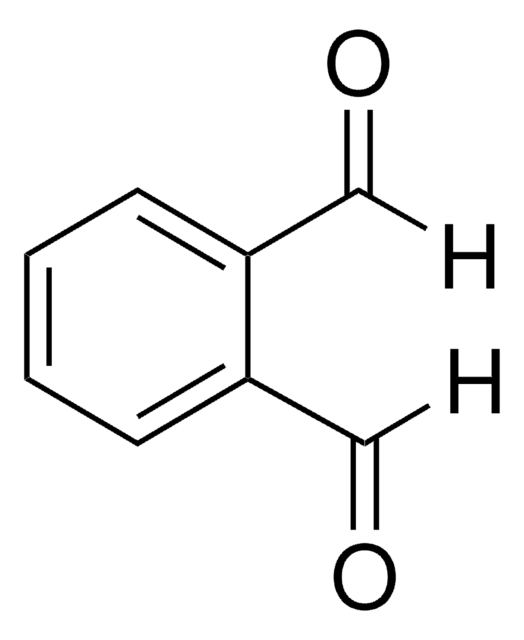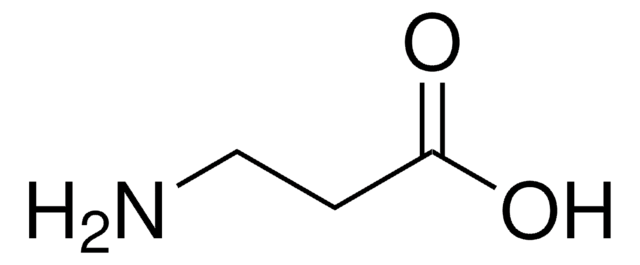G1763
β-Glutamic acid
≥98% (TLC), suitable for ligand binding assays
Synonym(s):
3-Aminopentanedioic acid
Sign Into View Organizational & Contract Pricing
All Photos(3)
About This Item
Empirical Formula (Hill Notation):
C5H9NO4
CAS Number:
Molecular Weight:
147.13
MDL number:
UNSPSC Code:
12352209
PubChem Substance ID:
NACRES:
NA.26
Recommended Products
product name
β-Glutamic acid,
Assay
≥98% (TLC)
Quality Level
form
powder
technique(s)
ligand binding assay: suitable
color
white to off-white
SMILES string
NC(CC(O)=O)CC(O)=O
InChI
1S/C5H9NO4/c6-3(1-4(7)8)2-5(9)10/h3H,1-2,6H2,(H,7,8)(H,9,10)
InChI key
BBJIPMIXTXKYLZ-UHFFFAOYSA-N
Biochem/physiol Actions
β-Glutamic acid (β-Glu) is used as an osmolyte in many archaea. β-Glutamic acid may be used as a substrate to study the specificity and kinetics of archaeal and bacterial glutamine synthetase (GS) enzymes. β-Glutamic acid is used to study primitive mechanisms of polypeptide formation.
Storage Class Code
11 - Combustible Solids
WGK
WGK 3
Flash Point(F)
Not applicable
Flash Point(C)
Not applicable
Personal Protective Equipment
dust mask type N95 (US), Eyeshields, Gloves
Certificates of Analysis (COA)
Search for Certificates of Analysis (COA) by entering the products Lot/Batch Number. Lot and Batch Numbers can be found on a product’s label following the words ‘Lot’ or ‘Batch’.
Already Own This Product?
Find documentation for the products that you have recently purchased in the Document Library.
Customers Also Viewed
H McLennan et al.
Neuropharmacology, 21(6), 549-554 (1982-06-01)
Separate receptors are recognized for the excitation of mammalian neurones by (a) L-glutamic and quisqualic acids and (b) N-methyl-D-aspartic (NMDA), and other amino acids which have conformationally restricted molecules. Several other compounds, both agonists and antagonists, have been examined, and
Jean-François Lambert
Origins of life and evolution of the biosphere : the journal of the International Society for the Study of the Origin of Life, 38(3), 211-242 (2008-03-18)
The present paper offers a review of recent (post-1980) work on amino acid adsorption and thermal reactivity on oxide and sulfide minerals. This review is performed in the general frame of evaluating Bernal's hypothesis of prebiotic polymerization in the adsorbed
D E Robertson et al.
Biochimica et biophysica acta, 992(3), 320-326 (1989-09-15)
13C- and 15N-NMR spectroscopy have been used to identify beta-aminoglutaric acid (beta-glutamic) as a major soluble component of the thermophilic, autotrophic marine methanogen Methanococcus thermolithotrophicus. This rare, non-protein amino acid has been recognized as a major dissolved free amino acid
P Robinson et al.
Applied and environmental microbiology, 67(10), 4458-4463 (2001-09-26)
The conversion of beta-glutamate to beta-glutamine by archaeal and bacterial glutamine synthetase (GS) enzymes has been examined. The GS from Methanohalophilus portucalensis (which was partially purified) is capable of catalyzing the amidation of this substrate with a rate sevenfold less
D E Robertson et al.
Applied and environmental microbiology, 56(5), 1504-1508 (1990-05-01)
The unusual compound beta-aminoglutaric acid (beta-glutamate) has been identified by 13C nuclear magnetic resonance spectroscopy in soluble extracts of marine methanogenic bacteria. We examined several methanogen species representing nine genera and found that beta-glutamate occurred in methanococci and two methanogenium
Chromatograms
application for HPLCOur team of scientists has experience in all areas of research including Life Science, Material Science, Chemical Synthesis, Chromatography, Analytical and many others.
Contact Technical Service








